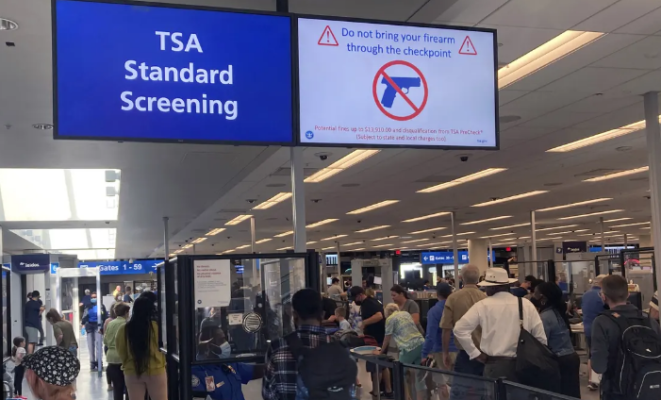Top 5 Airports Contributing to the Alarming Trend Revealed
Unprecedented Rise in Firearm Incidents
In 2023, the Transportation Security Administration (TSA) recorded an unprecedented surge in firearm confiscations at U.S. airports, marking a concerning trend that has persisted over the past three years. Despite the relatively small percentage compared to the vast number of passengers screened, the sheer volume of incidents has raised alarms within aviation security.
Record Numbers: 6,737 Guns Confiscated

Out of a staggering 858 million people screened before boarding flights, TSA agents discovered 6,737 firearms at security checkpoints. This marks the highest number ever recorded in a single year, highlighting a significant escalation over the preceding three years, each of which witnessed an increase in firearm confiscations.
Majority Were Loaded: A Disturbing Pattern
A notable and alarming pattern observed in these incidents is that the vast majority of confiscated firearms were loaded. This raises serious concerns about the potential risks associated with loaded weapons on commercial flights. Despite the relatively small percentage compared to the overall passenger volume, the potential consequences of such lapses in security cannot be understated.
Detection Through X-ray Scans
TSA officials underscored that nearly all the discovered firearms were identified through X-ray scans of carry-on luggage. This emphasizes the critical role of technology in aviation security. However, the persistently high numbers indicate that passengers are either unaware of the presence of firearms in their bags or are intentionally attempting to breach security protocols.
Accidental Declarations: Common Explanation
In a majority of cases, travelers claimed that they had left the firearms in their bags accidentally. While this might suggest a lack of awareness among passengers, it also points to a critical need for enhanced education and awareness programs to ensure that individuals understand the importance of complying with regulations regarding the transport of firearms.
Top 5 Airports: Contributing to the Surge

While firearm confiscations occurred across various airports, the TSA has identified the top five airports contributing to this surge in incidents. Understanding the prevalence of these occurrences at specific locations is crucial for targeted interventions and heightened security measures.
The Urgent Need for Enhanced Security Measures
The escalating trend of firearm confiscations at airports necessitates a comprehensive and proactive approach to enhance security measures. This includes investing in advanced detection technologies, implementing robust educational campaigns for passengers, and exploring innovative solutions to prevent intentional breaches.
Impact on Aviation Security
The surge in firearm incidents not only poses immediate risks but also has broader implications for the overall security posture of the aviation industry. Addressing this issue requires a collaborative effort involving federal agencies, airport authorities, airlines, and passengers to reinforce a culture of compliance and vigilance.
The Role of Passenger Education
In light of the common explanation of accidental firearm declarations, there is a critical need for intensified passenger education. This includes clear and accessible information about the rules and regulations governing the transportation of firearms, emphasizing the consequences of non-compliance, and promoting responsible firearm ownership.
TSA’s Response and Future Outlook
The TSA acknowledges the severity of the situation and has reiterated its commitment to strengthening security protocols. As the numbers continue to rise, there is an urgent call for a reevaluation of existing strategies and the exploration of innovative approaches to stay ahead of evolving threats.
Balancing Security and Passenger Awareness
The record-high firearm confiscations at U.S. airports in 2023 serve as a stark reminder of the evolving challenges in aviation security. Striking a delicate balance between robust security measures and comprehensive passenger education is imperative to ensure the safety and integrity of air travel. As federal agencies, airports, and airlines grapple with this alarming trend, the focus must remain on continuous improvement and adaptability to safeguard the skies effectively.




